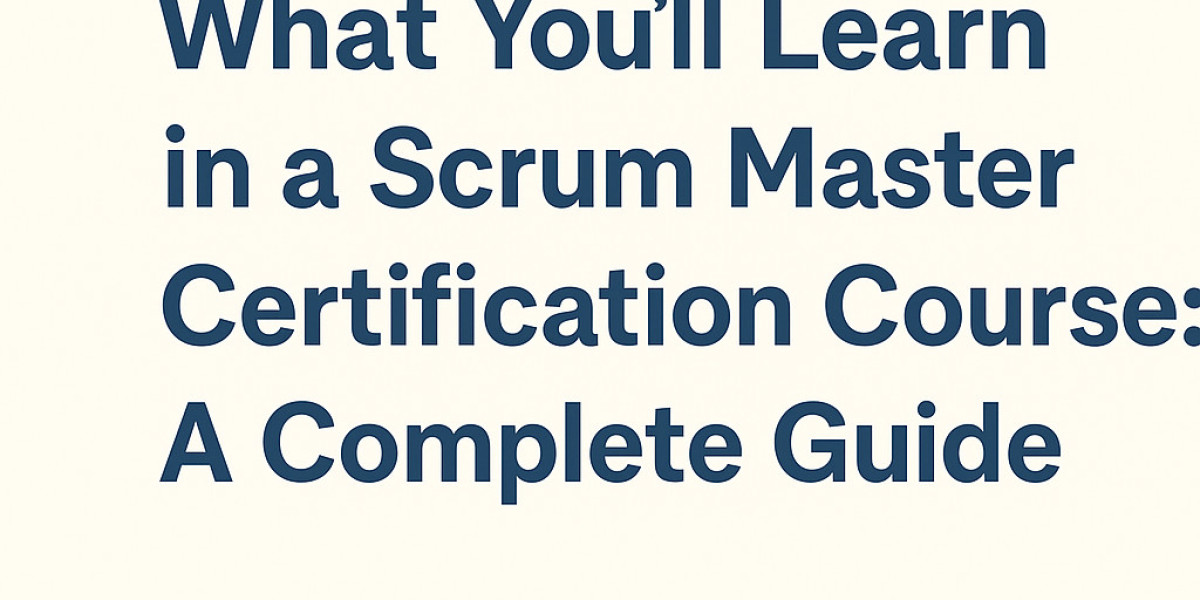In the fast-paced world of Agile project management, being equipped with the right knowledge and skills is vital. That’s where a Certified Scrum Master course comes into play. Whether you're starting a new career in Agile or looking to enhance your leadership in existing roles, this course helps you gain practical, actionable insights that can transform your career.
Let’s take a look at what you will actually learn when you enroll in a Scrum Master certification course.
1. Foundations of Agile and Scrum
The course begins with a strong introduction to Agile methodologies and the core Scrum framework. You’ll learn how Scrum fits into the broader Agile philosophy and why it's so effective in today’s dynamic work environments.
Topics typically include:
- Agile Manifesto and its 12 principles
- Differences between Agile and Waterfall project management
- Overview of the Scrum framework
- Values and pillars of Scrum (transparency, inspection, and adaptation)
These foundational concepts set the stage for understanding how Agile teams operate and thrive.
2. Scrum Roles and Responsibilities
Understanding team roles is key to running successful Scrum projects. A Certified Scrum Master course will clearly define and distinguish each role and how they interact.
You’ll learn about:
- Scrum Master – the team facilitator and process guide
- Product Owner – responsible for maximizing product value
- Development Team – cross-functional professionals who build the product
- How do these roles collaborate with stakeholders?
With this knowledge, you’ll be equipped to manage team dynamics and responsibilities effectively.
3. Scrum Events and Time-Boxing
A Scrum Master must guide the team through a series of structured events that help manage workflow and deliver value continuously. These time-boxed ceremonies ensure discipline and progress.
Key Scrum events covered:
- Sprint Planning
- Daily Scrum (Stand-ups)
- Sprint Review
- Sprint Retrospective
- Sprint execution period
Each event plays a crucial role in collaboration, adaptability, and feedback loops.
4. Product Backlog and User Story Management
One of the primary functions of a Scrum Master is supporting the team in managing and refining the product backlog. This ensures that development efforts align with business goals.
Here’s what you’ll master:
- Writing effective user stories
- Understanding acceptance criteria
- Backlog grooming and prioritization techniques
- Estimation using story points and planning poker
- Use of Agile tools like Jira or Trello
Proper backlog management is critical for delivering value consistently and efficiently.
5. Agile Facilitation and Coaching
Scrum Masters are not traditional project managers , they're facilitators and coaches who remove roadblocks and help teams reach their full potential.
You’ll gain skills in:
- Encouraging self-organized teams
- Promoting team collaboration
- Facilitating decision-making processes
- Removing impediments and resolving conflicts
- Leading Agile transformations
This focus on soft skills makes you a valuable servant-leader in any Agile team.
6. Agile Metrics and Reporting
To ensure continuous improvement and transparency, Agile teams rely on a set of key metrics. The course teaches how to interpret and use this data to guide the team.
Metrics you’ll work with:
- Velocity
- Sprint Burndown and Burnup charts
- Lead time and cycle time
- Cumulative flow diagrams
- Quality and defect metrics
By learning to analyze performance data, you can better drive productivity and team growth.





